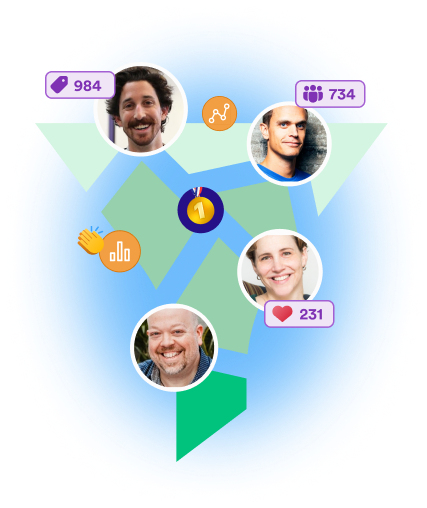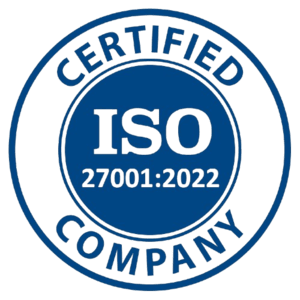At Airmeet, we empower marketing teams to harness the power of data throughout the event lifecycle—pre-event, during the event, and post-event. This blog will walk you through actionable insights to create a data-driven event strategy that fuels engagement and delivers tangible results.
1. Understanding Your Audience with Data Insights
Your audience is at the heart of every successful event. Start by diving into first-party data collected from past events to identify attendee interests, preferences, and behaviors. Combine this with third-party insights from tools like HubSpot to build a complete profile of your audience and refine your event strategy.
– Use surveys, website analytics, and CRM tools to identify audience preferences.
– Leverage Google Trends to discover seasonal or trending topics that align with your audience’s interests.
– Analyze which topics generated the most engagement in past events to double down on what works.
> Pro Tip: Airmeet’s platform helps you integrate real-time audience insights, so you can personalize your strategy based on what matters most to your attendees.
2. Deliver Personalized Experiences for Maximum Engagement
In a world filled with events, personalization sets you apart. The key is to segment your audience based on data insights—by industry, job role, or interests—and create tailored content to meet their expectations. Personalized invitations, custom agendas, and curated session recommendations enhance the attendee experience.
– Use pre-event surveys to capture attendee preferences.
– Segment your content by industry or job role to offer personalized agendas.
– Send automated reminders and follow-ups based on attendee behavior during the event.
> Pro Tip: Airmeet’s AI-powered chatbots facilitate real-time interactions by suggesting sessions, answering queries, and offering networking opportunities.
3. Leverage Data to Optimize Event Promotion
Promoting your event effectively ensures high-quality participation. Analyze past marketing efforts to understand what drove registrations, and refine your campaigns using insights from tools like Google Analytics and Search Console.
– Identify which marketing channels perform best for your audience (e.g., LinkedIn or email).
– Use data from previous campaigns to optimize ad targeting and messaging.
– Continuously test and iterate—A/B test invitations, ads, and landing pages to see what resonates best.
> Pro Tip: Airmeet’s real-time registration tracking helps you monitor campaign performance and adjust your strategy on the go.
4. Use Data to Adapt in Real-Time During Events
With Airmeet’s platform, organizers gain access to real-time engagement analytics. These insights allow you to make data-driven decisions on the fly—ensuring that every moment of your event resonates with attendees.
– Monitor audience engagement levels to adjust your presentation in real-time.
– Use live polls, Q&As, and breakout sessions to keep participants engaged.
– AI-driven recommendations suggest actions—such as introducing polls or changing topics—based on audience reactions.
> Pro Tip: When engagement drops, Airmeet suggests ways to recapture attention, such as interactive polls or audience-driven Q&A sessions.
5. Maximize the Impact with Post-Event Analysis
Your work doesn’t end when the event does. Post-event data is critical to understanding what worked, what didn’t, and where improvements are needed. With Airmeet, you can analyze engagement metrics to fine-tune future events and nurture attendee relationships.
– Review recording analytics to identify which segments were most engaging.
– Use interactive replays to offer on-demand content and continue engaging your audience after the event.
– Analyze attendee feedback and behavior to shape future event content and marketing strategies.
> Pro Tip: Create personalized follow-up campaigns using insights from attendee interactions to turn participants into long-term prospects.
6. Automate Event Management with Smart Tools
A data-driven strategy goes beyond insights—it also requires smart tools and automation to streamline event management. From pre-event logistics to post-event follow-ups, automation ensures nothing slips through the cracks.
– Use AI-powered agents to handle repetitive tasks like registration, speaker outreach, and scheduling.
– Automate follow-ups with personalized messaging, ensuring ongoing engagement beyond the event.
– Delegate operational tasks to AI chatbots, giving your team more time to focus on strategic planning.
> Pro Tip: Airmeet’s platform helps automate event management while maintaining a human touch, ensuring your brand stays connected with attendees.
Conclusion: Unlock the Power of Data-Driven Events with Airmeet
Building a data-driven event strategy isn’t just about collecting data—it’s about using it to create meaningful, personalized experiences that engage your audience at every step. With Airmeet’s comprehensive platform, B2B marketing teams can manage the entire event lifecycle seamlessly—from planning and promotion to real-time engagement and post-event follow-up.
Ready to transform your event strategy with data-driven insights? Schedule a demo with Airmeet today and discover how our platform can help you maximize engagement, automate operations, and drive business growth.
This blog positions Airmeet as the ultimate solution for data-driven event management, encouraging B2B marketing teams to explore its features and generate leads by booking a demo.













